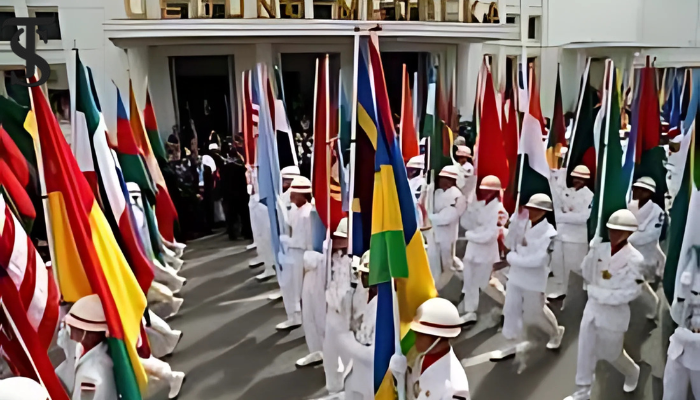Transforming Balochistan: Bridging Gaps in Development

- Mineral Wealth Utilization: Balochistan's vast mineral resources, valued at approximately $6 trillion, can drive economic growth and infrastructure development, especially with investments from international companies.
- China-Pakistan Economic Corridor (CPEC): CPEC serves as a crucial trade route, enhancing Balochistan's connectivity and economic prospects while offering significant revenue through transit fees.
- Energy Partnerships: The Iran-Pakistan gas pipeline presents an opportunity for energy security in Pakistan, with potential benefits for Balochistan, contingent upon regional stability and geopolitical negotiations.
Roadblocks to Development in Balochistan
Balochistan, the largest province of Pakistan, has faced significant barriers to development throughout its history. Security issues have plagued the region, and its vast, sparsely populated terrain has contributed to limited development. For any region to thrive, key factors such as flat land, water availability, and connectivity to essential resources are critical.
In Balochistan, establishing such infrastructure is particularly challenging due to the difficult terrain, leading to significantly higher costs for laying roads, providing electricity, and accessing water. Even connecting a single village can incur costs that far exceed those in more densely populated provinces like Sindh and Punjab. Consequently, successive governments have tended to prioritize investments in areas that promise greater returns for the maximum number of people.
Before attributing Balochistan’s struggles to conspiracy or local corruption, it is essential to recognize that corruption is a global issue. The uneven development within nations can often be traced to historical and economic factors. For example, in the United States, development varies widely from state to state based on revenue generation. Major cities like New York and Chicago prosper due to consolidated economic opportunities, while more remote areas like Alaska lag behind due to their sparse populations and lack of infrastructure. This trend is mirrored in Balochistan, where limited resources naturally lead to investment in more populous areas.
As we consider how to spur development in Balochistan, it is essential to recognize that while the province is rich in resources, it suffers from poor management. The pressing question arises: what steps can be taken to enable Balochistan to generate revenue effectively?
While agriculture is only viable in the northern regions near Quetta, much of southern and central Balochistan is inhospitable, limiting potential revenue sources. However, I see three promising pathways that could facilitate Balochistan’s development and integration into regional and global economies over the next few years.
Pathway One: Balochistan’s Mineral Wealth
Balochistan’s mineral wealth has long been recognized. In 2023, the federal government of Pakistan hosted a Minerals Summit, revealing conservative estimates of the province’s mineral deposits, valued at approximately $6 trillion. This figure encompasses crucial resources like gold, copper, silver, iron, and other significant minerals essential for renewable energy and battery production. While the full extent of these deposits remains unknown due to a lack of comprehensive surveys, the demand for these minerals is projected to increase dramatically.
In the early 2000s, the Pakistani government awarded a mining contract to an international company, which was later canceled by the Supreme Court. This decision led to costly arbitration that resulted in Pakistan losing a $5.9 billion lawsuit in 2019. Subsequently, a settlement was reached, and the project is now being managed by Barrick Gold, which holds a 50% share, with the Government of Balochistan owning 25% and state-owned enterprises holding the remainder.
Currently, the federal government is in discussions to sell shares to a Saudi investment group, with reports indicating a 15% investment from Saudi Arabia in the project. Over the next five years, investments exceeding $3 billion are anticipated, potentially attracting around $9 billion in total. While this will not manifest as direct cash flow to the government, it will contribute to critical infrastructure development, including roads and factories necessary for processing minerals.
Barrick Gold estimates that production could commence by 2028, generating approximately $2 billion in annual revenue. However, it is important to note that this revenue will be influenced by extraction and processing costs. Despite these costs, the project promises significant employment opportunities and infrastructure advancements within the region.
Pathway Two: CPEC, Trade, and Geopolitical Changes
The China-Pakistan Economic Corridor (CPEC) is often perceived as merely a road network, but it is integral to a broader Silk Road strategy with substantial geopolitical implications. The competition among global powers, especially between the US, Russia, and China, influences CPEC’s development. With the US facing sanctions against Russia and Chinese firms, the geopolitical landscape is complex.
China’s investment in CPEC, amounting to around $50 billion, aims to create alternative trade routes that enhance connectivity to the Middle East, Africa, and Europe. The strategic significance of these routes becomes increasingly apparent amid ongoing tensions in the region. For instance, recent disruptions in trade routes due to geopolitical tensions have highlighted the necessity of CPEC for maintaining trade flow.
As China strives to counter potential trade blockades, CPEC serves as a vital alternative for its trade with Africa and the Middle East. Should just 10% of China’s $3.6 trillion exports pass through Pakistan, it would generate substantial revenue from transit fees, providing a crucial economic lifeline for Balochistan.
In addition to CPEC, the anticipated $10 billion investment by Saudi Arabia in an oil refinery in Pakistan will primarily serve China’s energy needs. The establishment of this refinery will create job opportunities and strengthen energy trade routes, enhancing Balochistan’s position within this evolving geopolitical framework.
Pathway Three: The Iran-Pakistan Gas Pipeline
The Iran-Pakistan gas pipeline has been a topic of significant discussion, with the potential for cheap gas from Iran to alleviate Pakistan’s energy crisis. However, US influence complicates the situation, as American officials have threatened sanctions should the project progress. Despite this, the economic realities may eventually necessitate pursuing the pipeline, especially as Pakistan’s gas reserves are projected to be depleted by 2027.
A viable solution could involve negotiations between Pakistan and the US to allow the pipeline’s construction in exchange for concessions in other areas. This pipeline will traverse Balochistan, making the region’s stability and security vital to its success. Ensuring safety from non-state actors will be critical for the pipeline’s infrastructure development.
Implications and Challenges
The successful development of these three pathways could revolutionize Balochistan and contribute significantly to Pakistan’s overall economy. However, several challenges must be addressed:
1. Regional Competition: The economic interests of multiple countries are intertwined with Balochistan’s development. For instance, Gwadar Port’s operational success could pose a threat to India’s interests, as it legitimizes the CPEC initiative. India is keen to prevent the development of Gwadar, fearing it could empower Pakistan and China’s partnership.
2. Iran-Pakistan Dynamics: Gwadar’s rise could hinder the growth of Iran’s Chabahar port, creating friction between the two nations. Additionally, the potential for Iranian gas pipelines to disrupt Qatar’s LNG market may further escalate regional tensions.
3. US-Iran Relations: The geopolitical tensions between the US and Iran complicate the viability of energy trade routes, impacting the broader landscape of Balochistan’s development.
4. Security Concerns: Various terrorist and separatist groups operate within Balochistan, posing challenges to stability. While legitimate grievances may exist among local populations, these issues can be exploited for larger geopolitical agendas.
Government’s Role in Success
The Government of Pakistan must facilitate collaboration among all stakeholders to navigate these complex dynamics. For instance, offering a stake to Saudi Arabia in the Reko Diq project represents a strategic move. Engaging various actors in win-win negotiations can help foster stability in Balochistan, allowing for the successful implementation of these development projects.
Balochistan’s Future
Much like Islamabad in the 1990s, Gwadar currently presents a unique opportunity for transformation. In the coming years, it is poised to develop into an international city, attracting investment and trade. If Balochistan capitalizes on its strategic position and resources, it could emerge as a critical player in the global economy.
In conclusion, the development of Balochistan hinges on the effective management of its resources and strategic geopolitical alignments. By embracing its mineral wealth, capitalizing on CPEC, and negotiating energy partnerships, Balochistan can unlock its potential and contribute significantly to Pakistan’s future prosperity.
Zoha
The writer is a freelance author and co-editor of the anthology *A Tough Day*. She has a strong passion for exploring socio-cultural issues, especially in Central Asia.






Mountsinai Pretty! This has been a really wonderful post. Many thanks for providing these details.